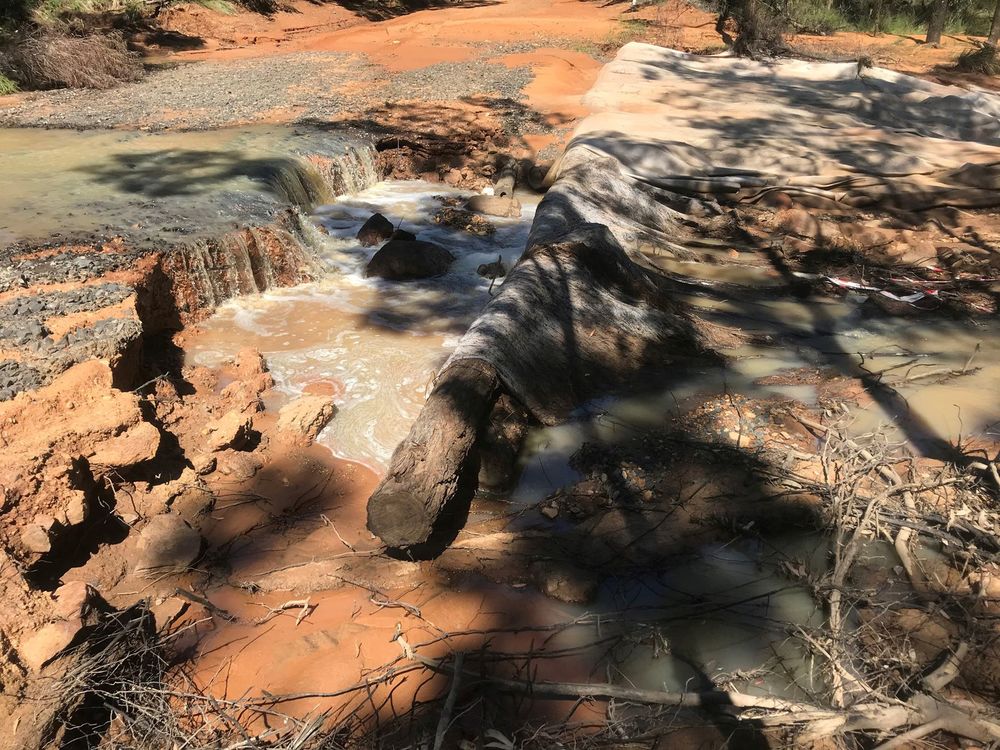Pilliga Forest roads warning
Liz Cutts
20 February 2023, 2:40 AM
 Damage to roads in the Pilliga Forest has prompted a warning from NSW Forests.
Damage to roads in the Pilliga Forest has prompted a warning from NSW Forests.An alert has been issued to anyone considering driving through the Pilliga to exercise extreme caution on hazardous forest roads.
Authorities are racing to fix up damaged roads now that rain and flooding has stopped. Many of the access roads and fire trails are impassable and, with the bushfire risk high, clearing fire trails is taking priority.
Visitors to the Pilliga are being urged to drive very carefully and keep their eyes open. There is signage up but the New South Wales Forestry Corporation has only been able to cover a fraction of the area so far.
Conan Rossler, Cypress Production and Fire Manager for the Northern Cypress District of NSW Forests says the repair bill is going to be huge.
“Three consecutive La Nina events have really hammered the roads,” Mr Rossler said. “We've got quite a few machines out at the moment trying to fix the roads; four graders in the past couple of weeks, but there is a lot of work to be done.
“We have put a lot of signage out, but quite frankly we have not yet got to the end of it in terms of identifying what all the issues are so there's is a whole lot of extra work to be done going forward.
"However, the biggest consideration at the moment is that we have extreme fire danger warnings, so we need to get all those access roads open so we can respond to fires," Mr Rossler said.
"The roads we are targeting for repairs are not the ones used by the public. Obviously, we look after the timber harvesting roads, but there is not a lot of activity on these at the moment."

Users of Pilliga Forest roads should exercise care at all times.
“The other thing is that we have a lot of beekeepers in the Pilliga. A few months ago, when it was really wet and the nectar flow was on there was a lot of road usage by heavy vehicles. However, the primary driver with us at the moment in determining our actions is the fire risk, which has kicked up a level.”
Cracks
Mr Rossler says that in 2020, the heavy rain right after the drought caused hundreds of deep cracks in the ground that brought timber logging to a halt.
“We spent hundreds of thousands of dollars fixing it up,” Mr Rossler added. “But I think that what has actually happened, given we have had three consecutive La Nina events, is that the soil has swelled.
"We certainly did a lot of work back filling some of those cracks, but I think now that the soil has reached a field capacity, it's almost back to what it should be. I'm sure there is still some residual damage in places, but it's largely sorted itself out now, thank goodness."
“The big issue is that road surfaces are in very, very poor condition, and the other concern is that when you get a lot of rain and the ground is saturated and if conditions are windy a lot of trees go over. Multiple roads are now closed because of fallen trees.
“We are asking the public to be very, very careful out there. People should not assume anything. We have put a lot of signage out, but, as I have said, don't assume that if there is a hazard that there will be a sign because we have just not got around to checking the hundreds of kilometres of road networks throughout the Pilliga. It is essential that drivers be alert at all times."
 Many roads in the Pilliga are closed due to damage from flooding.
Many roads in the Pilliga are closed due to damage from flooding.
“The message to the public, who don’t normally travel those roads, is to drive to the conditions. You might come around the corner and find a tree across the road, so you really need to proceed with caution because it's potentially very, very dangerous.
“We are very lucky, we have got a very good relationship with our contractors, but everybody is screaming out for the same machines to fix roads. It's a very competitive environment at the moment in terms of getting equipment to do this remedial work.”
Mr Rossler says that it is difficult to give an exact cost of the road repairs.
“I suspect we are well north of $200,000 already; there is very significant damage and we have a long way to go, we are not yet close to addressing the issue,” he concluded.




